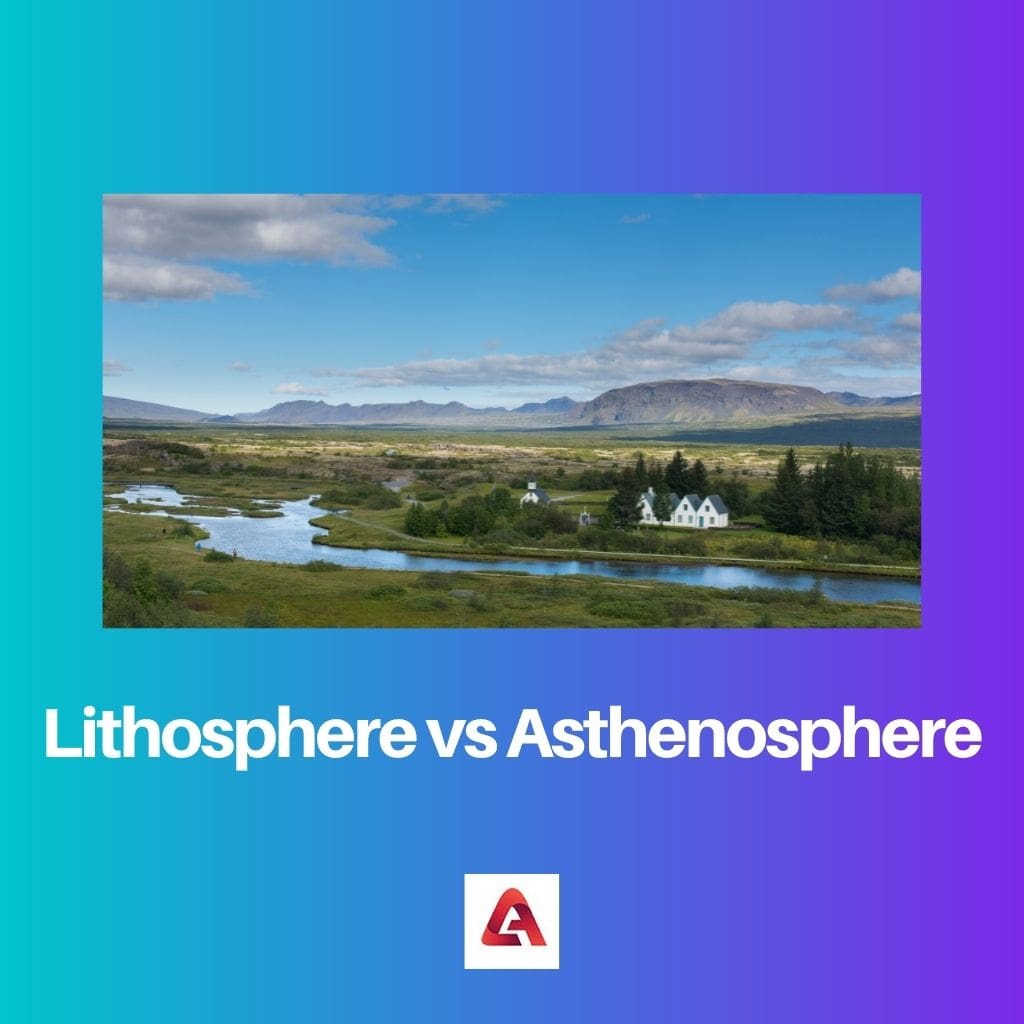Many know about the layers present above the Earth’s surface, but do they know about the layers present below the Earth’s surface or the atmosphere?
These layers are the lithosphere, asthenosphere, mantle, outer core, and inner core. Two layers found difficult to differentiate are the lithosphere and asthenosphere.
Key Takeaways
- Lithosphere is the rigid outer layer of the Earth, comprising the crust and the uppermost part of the mantle; the asthenosphere is a pliable, partially molten layer within the upper mantle beneath the lithosphere.
- Lithosphere is divided into tectonic plates that float and move on the underlying, less rigid asthenosphere; the asthenosphere allows plate movement due to its lower viscosity.
- Lithosphere plays a crucial role in forming landforms, such as mountains and ocean basins; the asthenosphere facilitates plate tectonics and drives geological processes like volcanism and seismic activity.
Lithosphere vs. Asthenosphere
Lithosphere has a variety of elements and two hundred minerals, whereas Asthenosphere mainly has iron-magnesium silicate. The lithosphere contains tectonic plates, which cause earthquakes etc. Asthenosphere lies below the lithosphere and has a 700 km depth from the earth’s surface.

The lithosphere is the layer below the atmosphere and consists of the Earth’s crust along with the uppermost solid layer of the mantle. This is the layer where the tectonic plates lie that are the cause of earthquakes, tsunamis, and volcanic eruptions.
The asthenosphere is the layer below the lithosphere. It is made of the uppermost weaker layers of the mantle and has a depth of 700 km from the Earth’s surface.
Comparison Table
| Parameters of Comparison | Lithosphere | Asthenosphere |
|---|---|---|
| Position | Below the earth’s surface and atmosphere | Below the lithosphere |
| Depth | 80km to 200km below the earth’s surface | Extends to 700 km below the earth’s surface. |
| Components | Crust and uppermost solid mantel | It consists of the uppermost weaker part of the mantel |
| Physical structure | Rigid, brittle and elastic that contains the tectonic plates | Mostly solid, with some partially molten rocks that exhibit the characteristics of plastic. |
| Characteristics | Elastic and ductile | It is more ductile than the lithosphere |
| Mineral contents | Of nearly 80 elements and 2000 minerals. | It mainly contains iron-magnesium silicate. |
| Temperature | 400 degree Celsius approximately | It can vary from 300 to 600 degrees Celsius. |
What is Lithosphere?
The lithosphere is the uppermost layer of the Earth. It lies right below the atmosphere and has a varying depth of 80 to 200 km below the Earth’s surface.
Statistically, the lithosphere has 80 varieties of elements along with 2000 other mineral compounds.
The concept of lithosphere was developed in 1911 by Barrell. This was because a gravitational field was present, which led to his belief of having a strong upper layer of Earth.
At the lithosphere-asthenosphere boundary, the molten rocks condense to form brittle rocks that break down.

What is Asthenosphere?
The asthenosphere is the layer present below the lithosphere. They consist of the uppermost weaker layer of the mantle and have a depth of 700 km from the Earth’s surface.
The asthenosphere is mostly solid except for a few regions with half-molten rocks, thus semi-fluid. This is the reason for their ductility and characteristic features resembling plastic.
The concept of the asthenosphere came in 1926.
Therefore, the half-molten rocks’ movement in the asthenosphere causes natural disasters.

Main Differences Between Lithosphere and Asthenosphere
- The lithosphere is right below the Earth’s atmosphere, whereas the asthenosphere is right below the lithosphere or the uppermost solid mantle layer.
- The lithosphere is about 80 to 200 km below the Earth’s surface. In the case of the asthenosphere, it has a depth of 700 km below the earth’s surface.
- https://agupubs.onlinelibrary.wiley.com/doi/abs/10.1029/2012GC004060
- https://agupubs.onlinelibrary.wiley.com/doi/abs/10.1029/JB081i020p03525